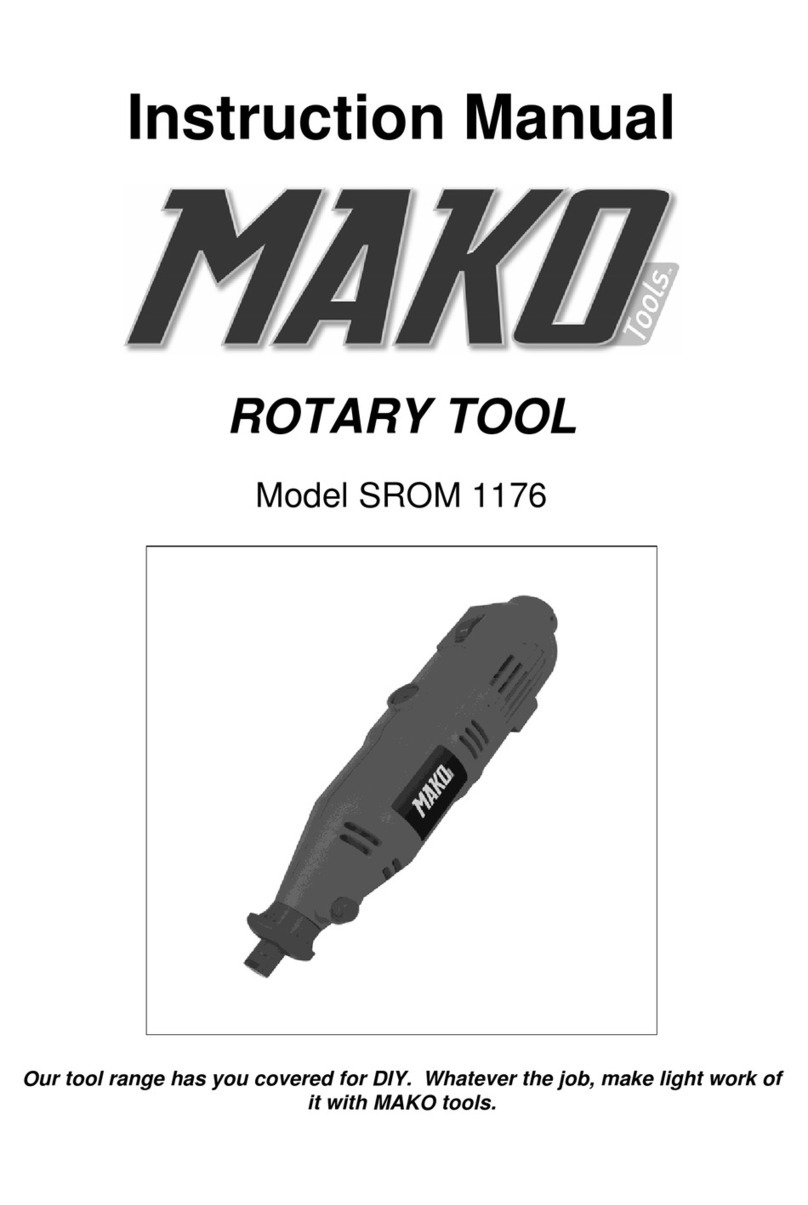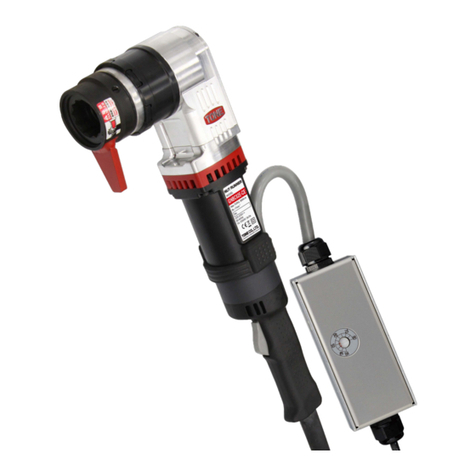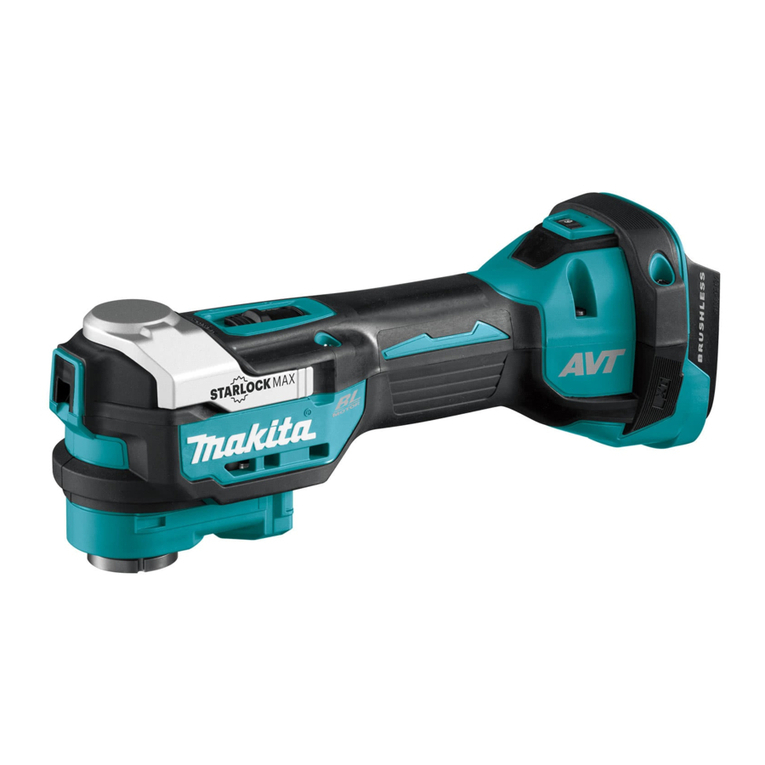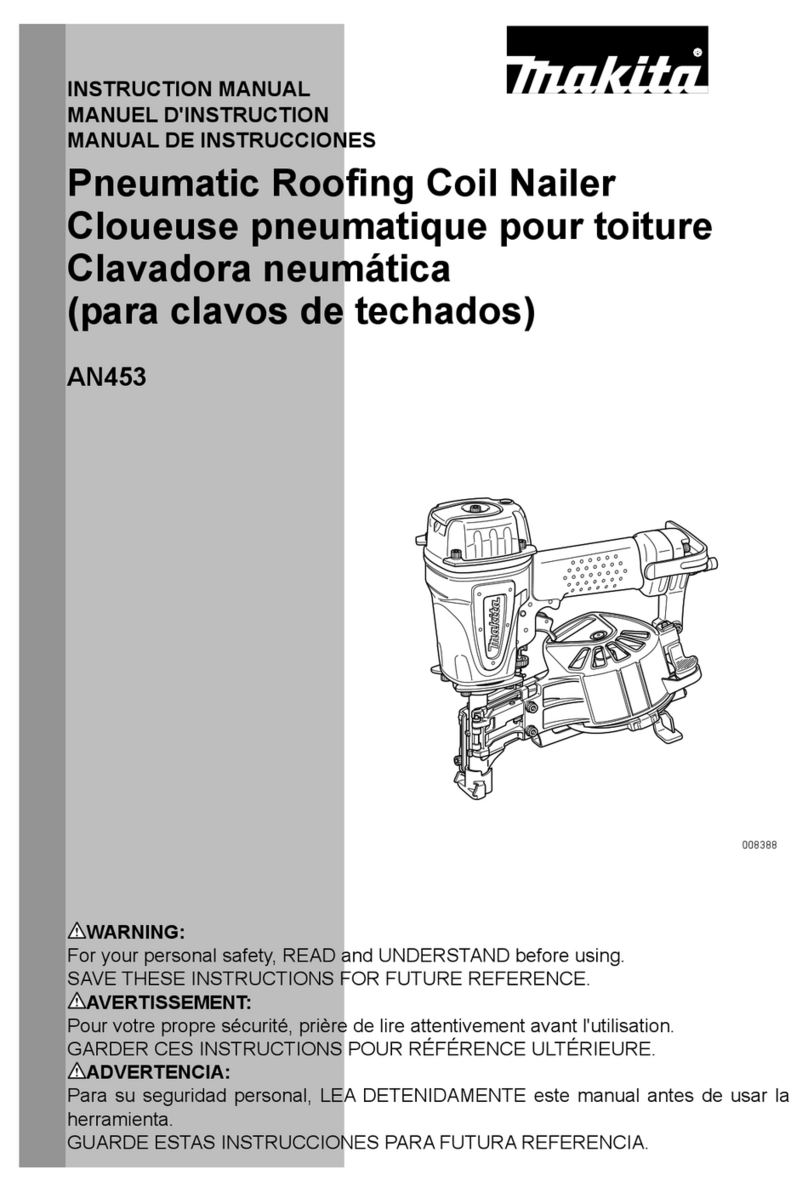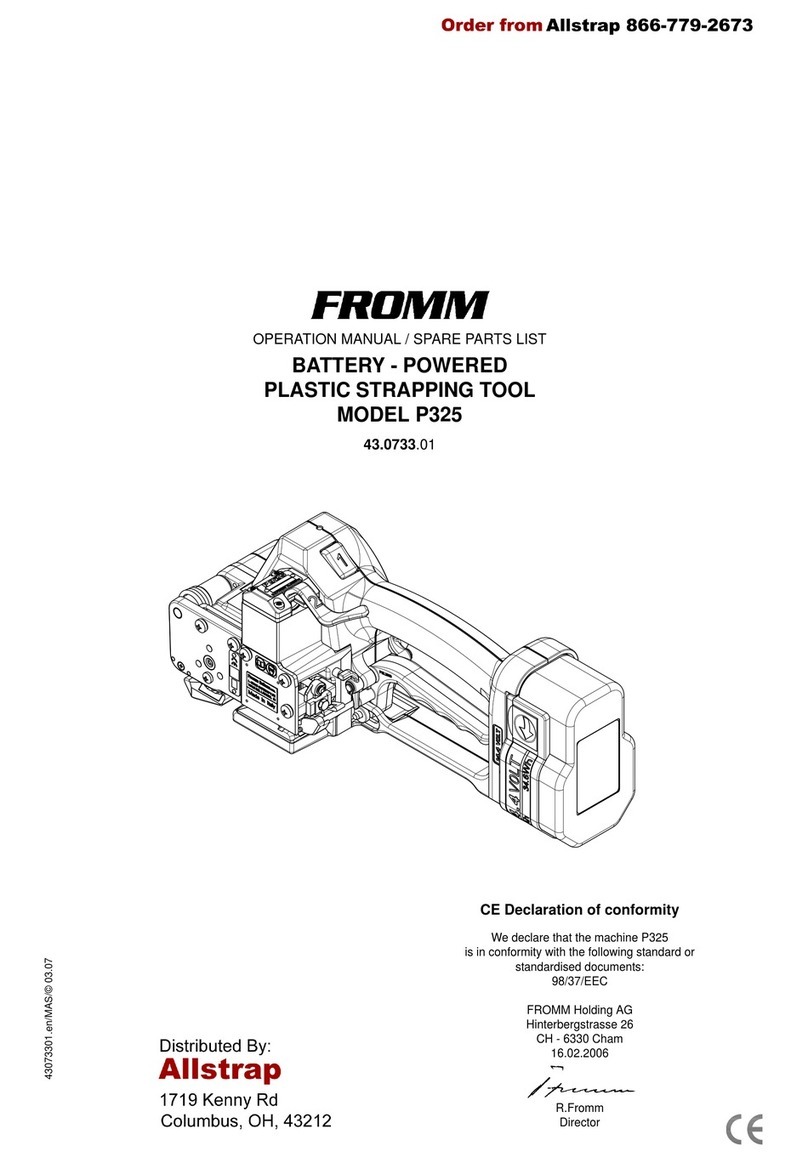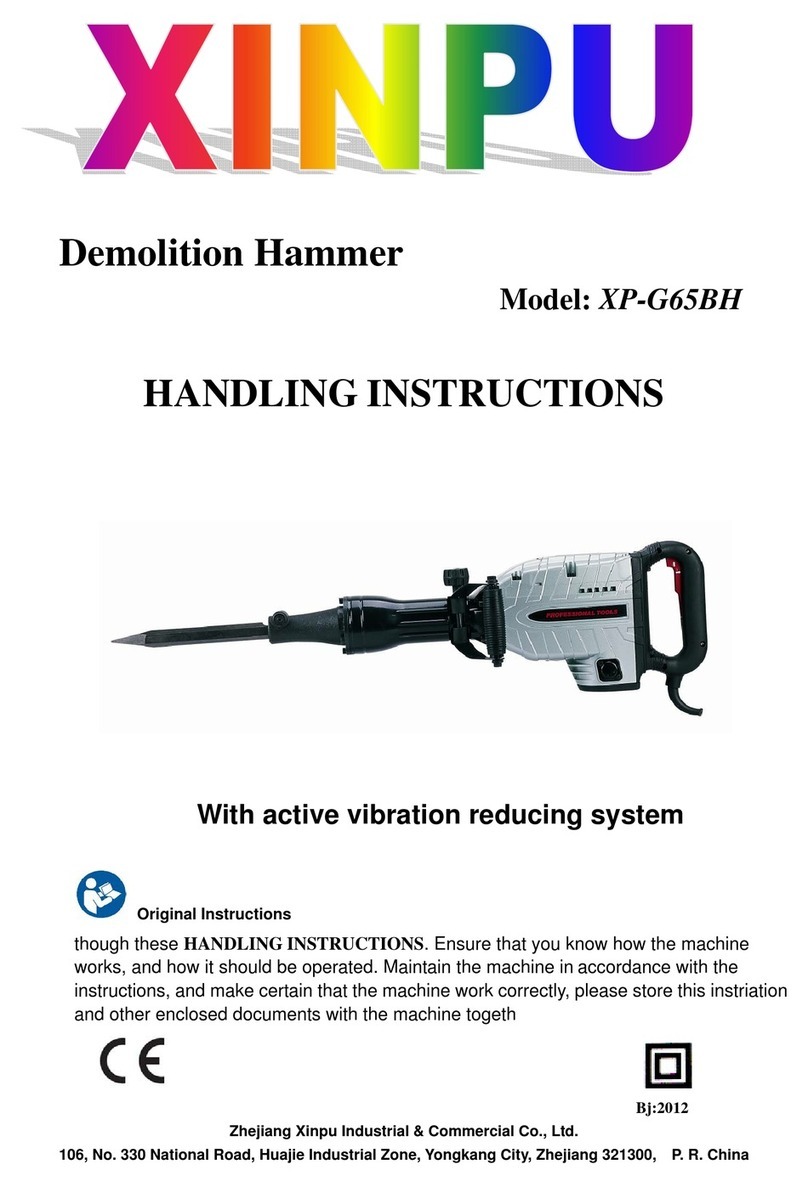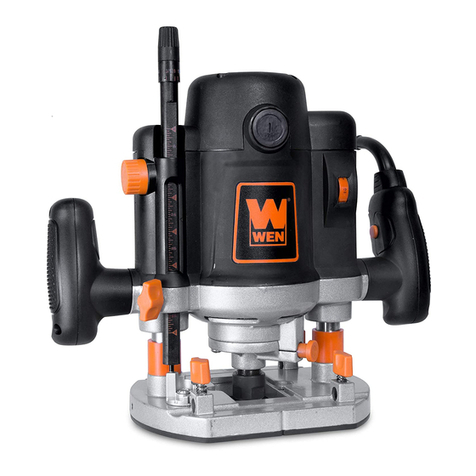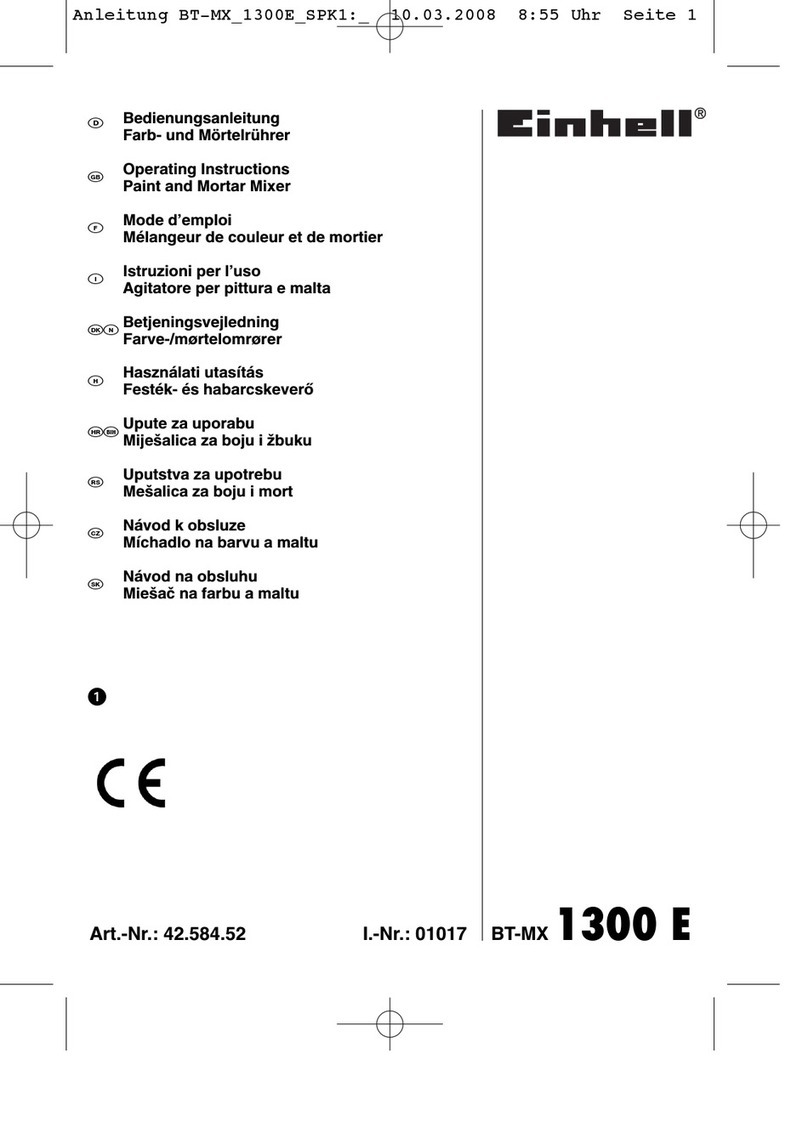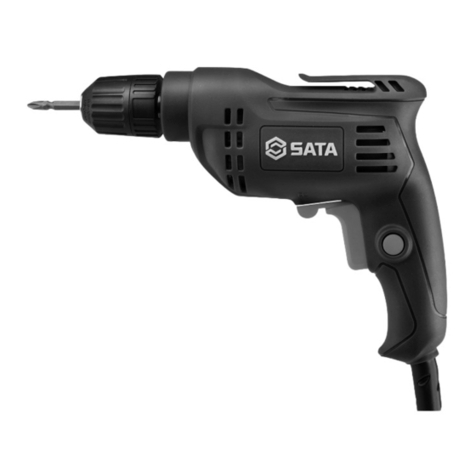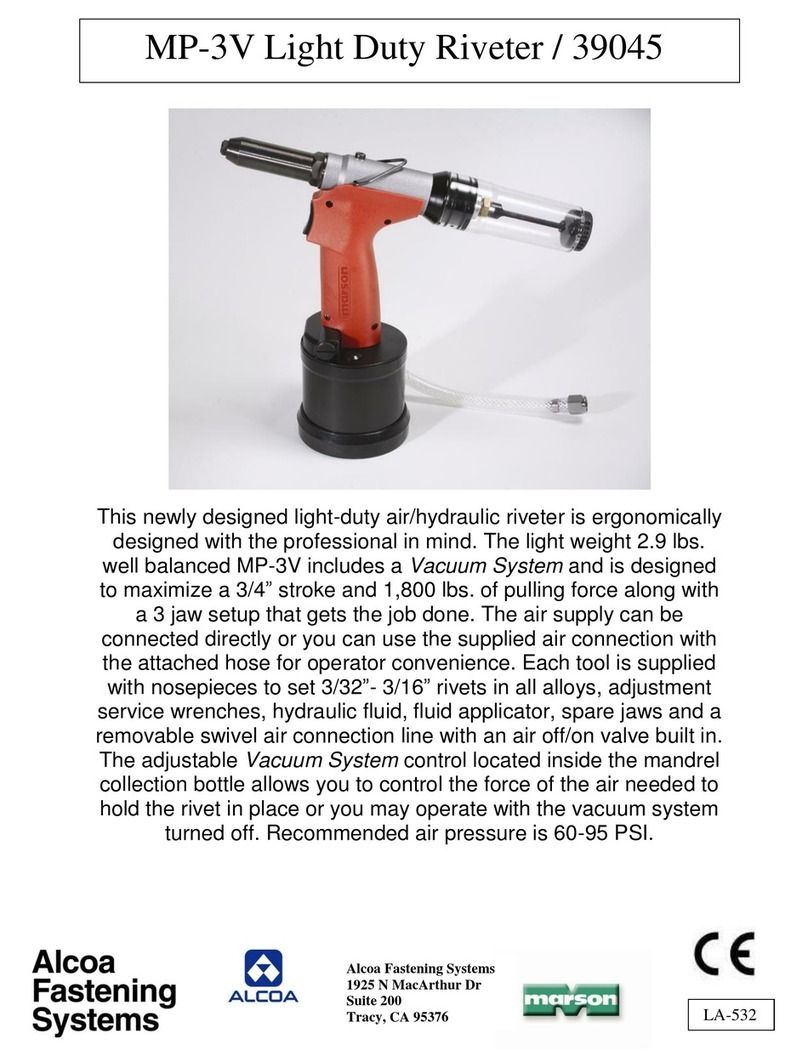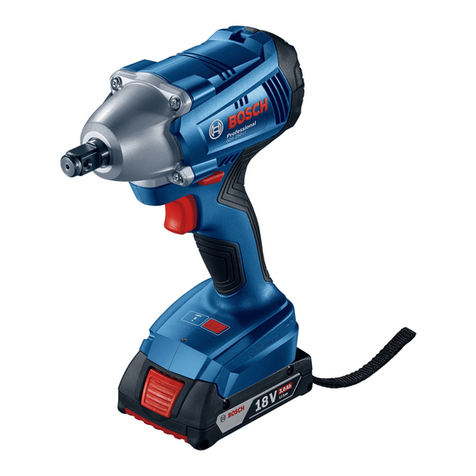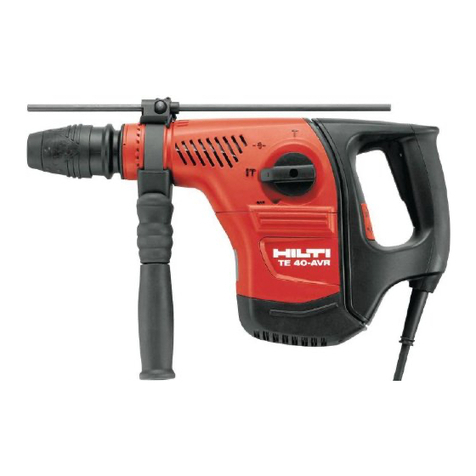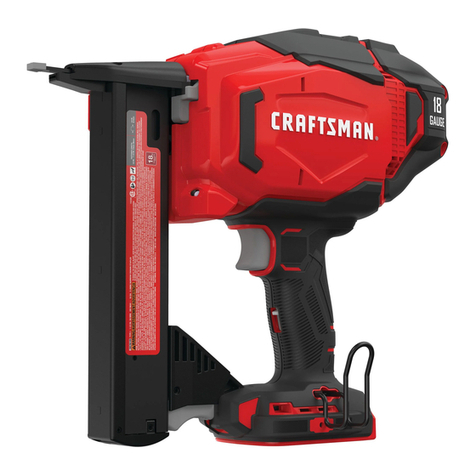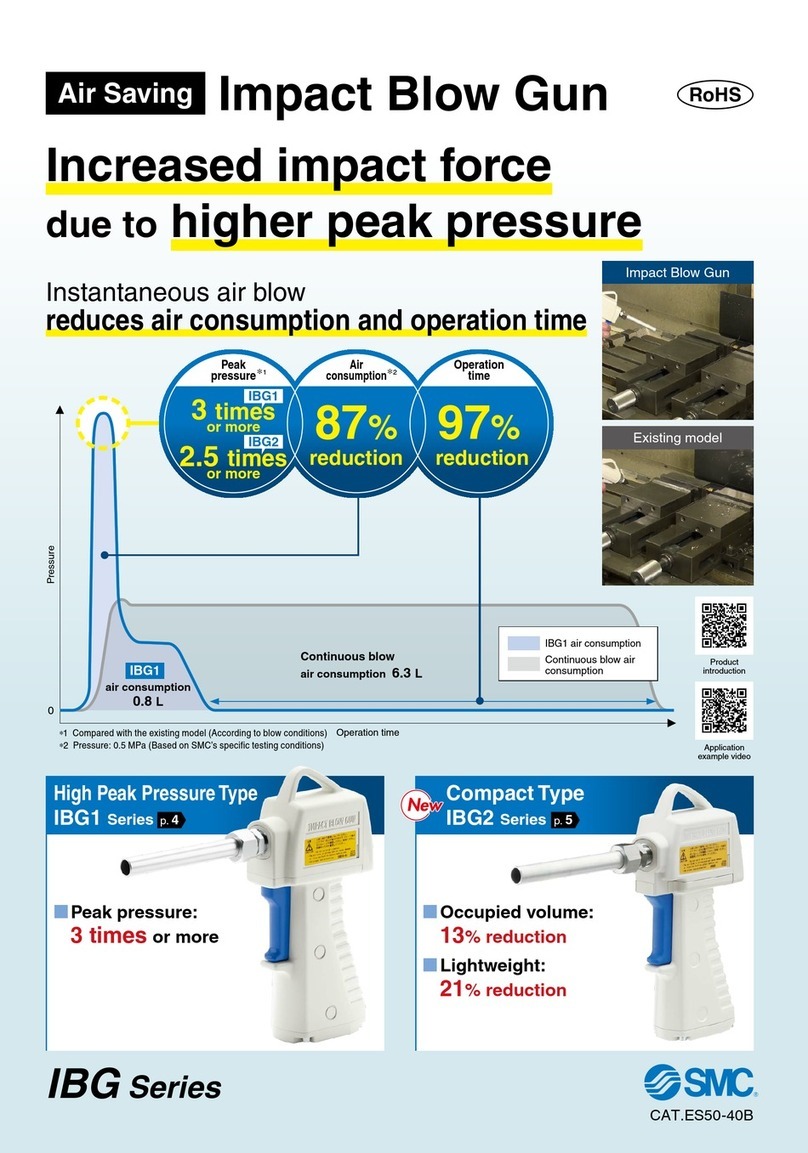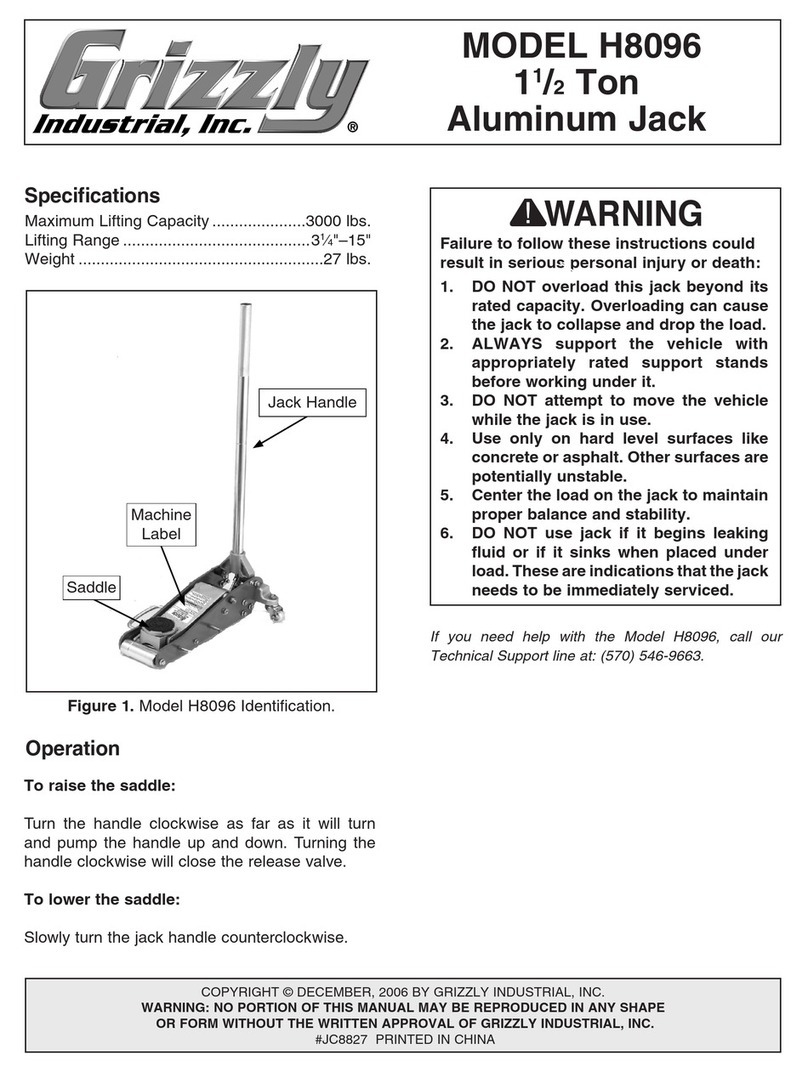Mako SROM1199 User manual

Instruction Manual
13MM DRILL PRESS
Model SROM1199
Our tool range has you covered for DIY. Whatever the job, make light work of
it with MAKO tools.

PRODUCT FEATURES:
1. Pulley Cover 9. Feed Handle
2. Motor 10. Belt Tension Lock
3. Switch 11. Base
4. Chuck Guard 12. Head Assembly
5. Chuck 13. Column
6. Table 14. Base Bolts
7. Table Support 15. Depth Stop Assembly
8. Column Support

Dear Valued Customer,
Thank you for purchasing this Mako Power Tool.
We are dedicated to providing quality Mako Power Tools at competitive prices. Whether you are
serious about DIY or just a casual user, our range of power tools are perfect for any job.
Mako 2 Year DIY Warranty:
All Mako Power Tools are backed by a comprehensive 2 year DIY warranty. If for any reason you
experience a fault with this power tool, please contact the retailer that it was purchased from, present
the receipt and warranty card (at the back of the operating manual), for a full refund or replacement.
The warranty is void if damage is not attributable to normal wear and tear, if the tool is used
commercially, the motor is overloaded or is tampered with, is damaged by accident or if it is bought
second hand. Continued use after partial failure, or the use with the incorrect accessories will void the
warranty.
This warranty excludes all Mako accessories, which are covered by their own appropriate warranties.
MAKO TOOLS ARE FOR DIY USE ONLY. THEY ARE NOT DESIGNED OR
APPROVED FOR INDUSTRIAL OR COMMERCIAL USE.

CONTENTS:
General Safety Rules
oWork Area safety
oElectrical Safety
oPersonal Safety
oPower Tool Use and Care
oService
Mako Drill Press Safety Instructions
Mako Drill Press Operating Instructions
Maintenance & Cleaning
Mako Drill Press Technical Data
Description of symbols:
Please read all of the safety and operating instructions carefully before using
this drill. Please pay particular attention to all sections of this User Guide that
carry warning symbols and notices.
Observe caution and safety notes!
Caution- electric shock! Danger to life!
n0No-load speed.
V~ AC Voltage
Wear hearing protection, dust protection mask,
protective glasses and protective gloves.
Keep children away from electrical power tools!
Only for use in dry, indoor spaces.
Check that the device, mains lead and plug are in good
condition!
Safety classⅡ
Dispose of packaging and appliance in an
environmentally friendly way!

GENERAL POWER TOOL SAFETY WARNINGS:
WARNING Read all safety warnings and all instructions. Failure to follow the warnings
and instructions may result in electric shock, fire and/or serious injury.
Save all warnings and instructions for future reference.
The term "power tool" in the warnings refers to your mains-operated (corded) power tool or battery-
operated (cordless) power tool.
1) Work area safety
a) Keep work area clean and well lit. Cluttered or dark areas invite accidents.
b) Do not operate power tools in explosive atmospheres, such as in the presence of
flammable liquids, gases or dust. Power tools create sparks which may ignite the dust or
fumes.
c) Keep children and bystanders away while operating a power tool. Distractions can
cause you to lose control.
2) Electrical safety
a) Power tool plugs must match the outlet. Never modify the plug in any way. Do not use
any adapter plugs with earthed (grounded) power tools. Unmodified plugs and matching
outlets will reduce risk of electric shock.
b) Avoid body contact with earthed or grounded surfaces, such as pipes, radiators,
ranges and refrigerators. There is an increased risk of electric shock if your body is earthed
or grounded.
c) Do not expose power tools to rain or wet conditions. Water entering a power tool will
increase the risk of electric shock.
d) Do not abuse the cord. Never use the cord for carrying, pulling or unplugging the
power tool. Keep cord away from heat, oil, sharp edges or moving parts. Damaged or
entangled cords increase the risk of electric shock.
e) When operating a power tool outdoors, use an extension cord suitable for outdoor use.
Use of a cord suitable for outdoor use reduces the risk of electric shock.
f) If operating a power tool in a damp location is unavoidable, use a residual current
device (RCD) protected supply. Use of an RCD reduces the risk of electric shock.
3) Personal safety
a) Stay alert, watch what you are doing and use common sense when operating a power
tool. Do not use a power tool while you are tired or under the influence of drugs,
alcohol or medication. A moment of inattention while operating power tools may result in
serious personal injury.
b) Use personal protective equipment. Always wear eye protection. Protective equipment
such as dust mask, non-skid safety shoes, hard hat, or hearing protection used for
appropriate conditions will reduce personal injuries.
c) Prevent unintentional starting. Ensure the switch is in the off-position before
connecting to power source and/or battery pack, picking up or carrying the tool.
Carrying power tools with your finger on the switch or energising power tools that have the
switch on invites accidents.
d) Remove any adjusting key or wrench before turning the power tool on. A wrench or a
key left attached to a rotating part of the power tool may result in personal injury.
e) Do not overreach. Keep proper footing and balance at all times. This enables better
control of the power tool in unexpected situations.
f) Dress properly. Do not wear loose clothing or jewellery. Keep your hair, clothing and
gloves away from moving parts. Loose clothes, jewellery or long hair can be caught in
moving parts.
g) If devices are provided for the connection of dust extraction and collection facilities,
ensure these are connected and properly used. Use of dust collection can reduce dust-
related hazards.
4) Power tool use and care
a) Do not force the power tool. Use the correct power tool for your application. The
correct power tool will do the job better and safer at the rate for which it was designed.

b) Do not use the power tool if the switch does not turn it on and off. Any power tool that
cannot be controlled with the switch is dangerous and must be repaired.
c) Disconnect the plug from the power source and/or the battery pack from the power tool
before making any adjustments, changing accessories, or storing power tools. Such
preventive safety measures reduce the risk of starting the power tool accidentally.
d) Store idle power tools out of the reach of children and do not allow persons unfamiliar
with the power tool or these instructions to operate the power tool. Power tools are
dangerous in the hands of untrained users.
e) Maintain power tools. Check for misalignment or binding of moving parts, breakage of
parts and any other condition that may affect the power tool’s operation. If damaged,
have the power tool repaired before use. Many accidents are caused by poorly maintained
power tools.
f) Keep cutting tools sharp and clean. Properly maintained cutting tools with sharp cutting
edges are less likely to bind and are easier to control.
g) Use the power tool, accessories and tool bits etc. in accordance with these
instructions, taking into account the working conditions and the work to be performed.
Use of the power tool for operations different from those intended could result in a hazardous
situation.
5) Service
a) Have your power tool serviced by a qualified repair person using only identical
replacement parts. This will ensure that the safety of the power tool is maintained.
ADDITIONALSAFETYRULESFORDRILLPRESSES
CAUTION: AS WITH ALL MACHINERY, THERE ARE CERTAIN HAZARDS
INVOLVED WITH DRILL PRESS OPERATION AND USE.
EXERCISING RESPECT AND CAUTION WILL CONSIDERABLY LESSEN THE RISK
OF PERSONAL INJURY. HOWEVER, IF NORMAL SAFETY PRECAUTIONS ARE
OVERLOOKED, OR IGNORED, PERSONAL INJURY TO THE OPERATOR, OR
DAMAGE TO PROPERTY MAY RESULT.
1. IMPORTANT: You should not operate this machine unless you are thoroughly familiar with drilling
machines and drilling techniques. If there any doubt whatsoever you should consult a qualified
person.
2. NEVER operate the machine until it is completely assembled and you have read and understood
this entire manual.
3. ALWAYS use clamps or a drill vice bolted to the table, to hold the work. It should never be held
with bare hands.
4. ALWAYS shut off the power & remove drill bit before leaving the machine.
5. ALWAYS make all adjustments with the power off
6. ALWAYS use the correct drilling speeds for the drill size and the type of material being drilled.
7. NEVER leave the drill unattended whilst it is running. Turn the machine OFF and do not leave
until it has come to a complete stop.
8. ALWAYS remove and store the drill bits when you have finished work.
9. NEVER attempt to drill into a workpiece that does not have a flat surface unless a suitable
support is used.
10. ALWAYS stop the drill before removing workpieces, work supports or swarf from the table.
11. Keep drills sharp and clean for best and safest performance. Follow instructions for changing
accessories.
12. Adjust the table or depth stop to avoid drilling into the table surface.
13. ALWAYS be sure that the drill bit is securely locked in the chuck.
14. NEVER assemble or set up any work on the table while the drill is running.
15. ALWAYS ensure the table lock is tight before starting the drill.
16. Keep handles dry, clean and free from oil and grease.
17. ALWAYS keep hands and fingers away from the drill bit.

WARNING: DUST GENERATED FROM CERTAIN MATERIALS CAN BE
HAZARDOUS TO YOUR HEALTH. ALWAYS OPERATE THE DRILL IN A WELL
VENTILATED AREA. USE A DUST COLLECTION SYSTEM IF POSSIBLE
WARNING: THE USE OF ANY ACCESSORY OR ATTACHMENT OTHER THAN ONE
RECOMMENDED IN THIS INSTRUCTION MANUAL MAY PRESENT A RISK OF
PERSONAL INJURY.
UNPACKING
The drill press is delivered with the components shown on page 2. Check the parts received against
the list. Should there be any deficiencies or damage, you should contact the dealer where the
product was originally purchased immediately. Do not discard the packaging until the machine is
assembled.
The packaging consists of cardboard and appropriately marked materials which can be sent to a re-
cycling facility.
To protect the machine parts from moisture, a protective coating of light machine oil will have been
applied to the outside surfaces. Remove any excess with a paper towel.
Take care when lifting the head assembly, considering its weight.
Before use, the machine must be mounted, and securely bolted, to a strong, heavy workbench, of
sufficient height that you will be standing upright when working.
Ensure the work place is adequately lit, and that you will not be working in your own shadow.
ASSEMBLY
WARNING! During assembly ensure the drill press is disconnected from the
power supply.
Carefully remove contents from the packing box.
Select a firm, level surface on which to assemble the drill press.
BASE & COLUMN
1. Select the Base (11) and align the Column Support (8) over the large hole - Fig. 1.
2. Align the holes in the Column Support with those in the Base and secure in place using the bolts
and washers. Using a spanner, securely tighten all bolts.
3. We recommend then mounting the Base to a stable surface for proper support.
TABLE & HOLDER
1. Slide the Table Support (7) and Table (6) down the Column (13) and clamp it at a level that will
not interfere with mounting the Head Assembly (12) – Fig 2.

HEAD ASSEMBLY
1. Lift the Head Assembly (12) and slide it down the Column as far as it will go. Align the spindle
with the centreline of the Base.
2. Secure the Head Assembly by tightening the grub screws on the right side of the housing – Fig 3.
3. Fit the Feed Wheel Handles (9) by screwing them into the hub of the Feed Wheel – Fig 4.
CHUCK AND ARBOR
1. Before assembly, ensure the jaws are wound all the way up inside the Chuck to protect them from
damage.
2. Wipe clean the small tapered end of the arbor and the socket of the chuck with a clean cloth, and
then the slide the socket of the chuck onto the arbor with a reasonable level of force – Fig 5.
3. Once located correctly, tap the underside of the chuck firmly with a soft hammer. If the chuck
cannot be pulled out by hand it is installed correctly
4. Fit the clear Chuck Guard (4) to the hinged Chuck Guard Holder and fasten the fixing screws –
Fig 6.

SETTINGS AND ADJUSTMENTS.
WARNING! During settings and adjustments, ensure that the drill press is
disconnected from the power supply.
TABLE HEIGHT ADJUSTMENT
1. Loosen the Table Support Clamp.
2. Slide the Table up or down the Column. Retighten the Clamp
TABLE ANGLE ADJUSTMENT
1. The angle is adjusted by loosening the bolt that is located underneath the table with a spanner
and then setting to the required angle.
2. When set, retighten the bolt, checking that the angle has not changed as the bolt was tightened.
FITTING A DRILL BIT
1. Open the Chuck Jaws by rotating in an anti-clockwise direction.
2. Insert the drill bit into the Chuck.
3. Holding the bit centered with one hand, rotate the collar of the chuck clockwise until the jaws grip
the drill shank. Insert the key into one of the 3 holes provided, and tighten the chuck until the bit
is secure.
SETTING THE DEPTH
To set the depth of the hole, adjust the Depth Stop (15) as follows:
1. Lower the chuck with the power OFF, until the drill bit touches the surface of the workpiece, and
hold in that position.
2. Spin down the adjuster nut so that the gap between its underside and top of bracket is the depth
of the hole required.
3. Screw down the lock nut and lock it against the adjuster nut.
The drill is now set to drill holes to your pre-determined depth from that particular start point, i.e.,
providing the surface of your workpiece is flat and level, you may drill a series of holes, each to the
same depth.
The scale and pointer can also be used when drilling individual holes.
Lower the chuck until the drill bit touches the work. Set the pointer against a point on the scale and
proceed to drill to the required depth, using the scale.
CHANGING THE SPEED
WARNING! Before changing the speed, ensure that the drill press is switched OFF
and disconnected from the power supply.
1. Open the Pulley Cover (1) by first removing the screw.
2. Slacken off the Belt Tension Lock (10) to relieve the tension on the drive belt.
3. Consult the chart inside the pulley cover, and position the belt on the pulleys according to the
spindle speed required.
4. When the belt has been correctly positioned, re-tension by levering the motor away from the
head. Lever the Motor (1) with its bracket, away from the head, so that tension is applied to the
belt. Tension is correct when the belt deflects by approx. 1/2”at its centre, when using reasonable
thumb pressure.
5. Lock the Motor in this position using the Belt Tension Lock.
6. Close the Pulley Cover and refit the screw.
OPERATION
It is recommended that this tool is always supplied via a Residual Current Device with a rated
residual current of 30 mA or less.
TURNING ON AND OFF
NOTE: The belt cover must always be closed when operating the Drill Press.
1. Switch the drill press ON by pressing the green (l) button on the Switch (3).

2. Switch the drill press OFF by pressing the red (O) button on the Switch.
3. Secure your workpiece to the table if possible, use a vice or clamps.
DRILLING
1. Ensure the drill press is switched off and disconnected from the power supply.
2. Loosen the jaws of the chuck with the chuck key by turning in an anti-clockwise direction and
insert the selected drill bit into the as far as it will go.
3. Insert the chuck key into 1 of the 3 locating holes and tighten until drill bit is secure.
4. Select your drilling depth and secure the depth stop lock knob in position.
5. Adjust the table to your desired position.
6. Slowly rotate the feed wheel handles to bring the drill bit down towards the table and into your
workpiece. After drilling a hole, release the feed wheel handles slowly to return the chuck to its
original position.
7. Continue the operation until the task is completed. When completed, switch the drill press OFF
by pressing the red (O) button on the switch.
MAINTENANCE
For maximum performance, it is essential that the Drill Press is properly maintained. Always inspect it
before use. Any damage should be repaired, and faults rectified. Always remove the plug from the
power supply before carrying out any adjustment, servicing or maintenance.
If the supply cord is damaged it must be replaced only with the correct part by an authorised
service agent to avoid a safety hazard.
Please refer to the trouble shooting chart on the following page. If you are unable to rectify any faults,
please contact your local dealer for assistance.
MONTHLY (IF IN REGULAR USE)
1. Check tightness of mounting bolts, and head and column securing set screws.
2. Cheek the drive belt for wear, and replace if frayed or damaged.
3. Blow out with compressed air, or vacuum clean out, any dust that may have accumulated in the
motor fan vents.
4. Apply a thin coat of wax paste or light oil to the table and column, for lubrication, and to help
prevent corrosion.
If the mains lead is damaged in any way, it should be replaced immediately.
LUBRICATION
All bearings are packed with grease at the factory and require no further lubrication.
Occasionally, lubricate the quill shaft and rack with light oil if required.
AFTER USE
Remove all swarf from the machine and thoroughly clean all surfaces.
Components should be kept dry, with machined surfaces lightly oiled.
Always remove drill bits, and store in a safe place.
CAUTION: Water must never come into contact with the tool.
DISPOSAL:
Do not dispose of electrical appliances with your domestic waste!
Recycle where facilities exist. Contact your local council for advice.
The packaging comprises exclusively environmentally- friendly material.
Dispose of it in your local recycling containers.

TECHNICAL DATA
13mm DRILL PRESS SROM1199
Rated Voltage 230V, 50Hz
Input Power 350W
Unloaded Speed 620, 920, 1280, 1750,
2620min-1
Chuck Capacity 13mm
Drilling Capacity - wood 20mm
Drilling Capacity - steel 13mm
Manufactured in China for:
The Warehouse Limited
The Warehouse Way, Northcote, Auckland
0800 422 274
Table of contents
Other Mako Power Tools manuals

